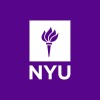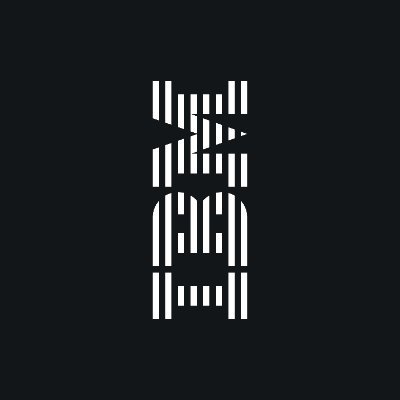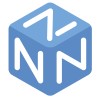|
I am an Applied Scientist at Amazon, working on generative models.
|

|
|
I am an engineer and researcher broadly interested in Probabilistic Machine Learning, Perception and
Geometry, |
|
I am interested in the generalization and adaptation capabilities of hierarchical
generative models. |
|
|
|
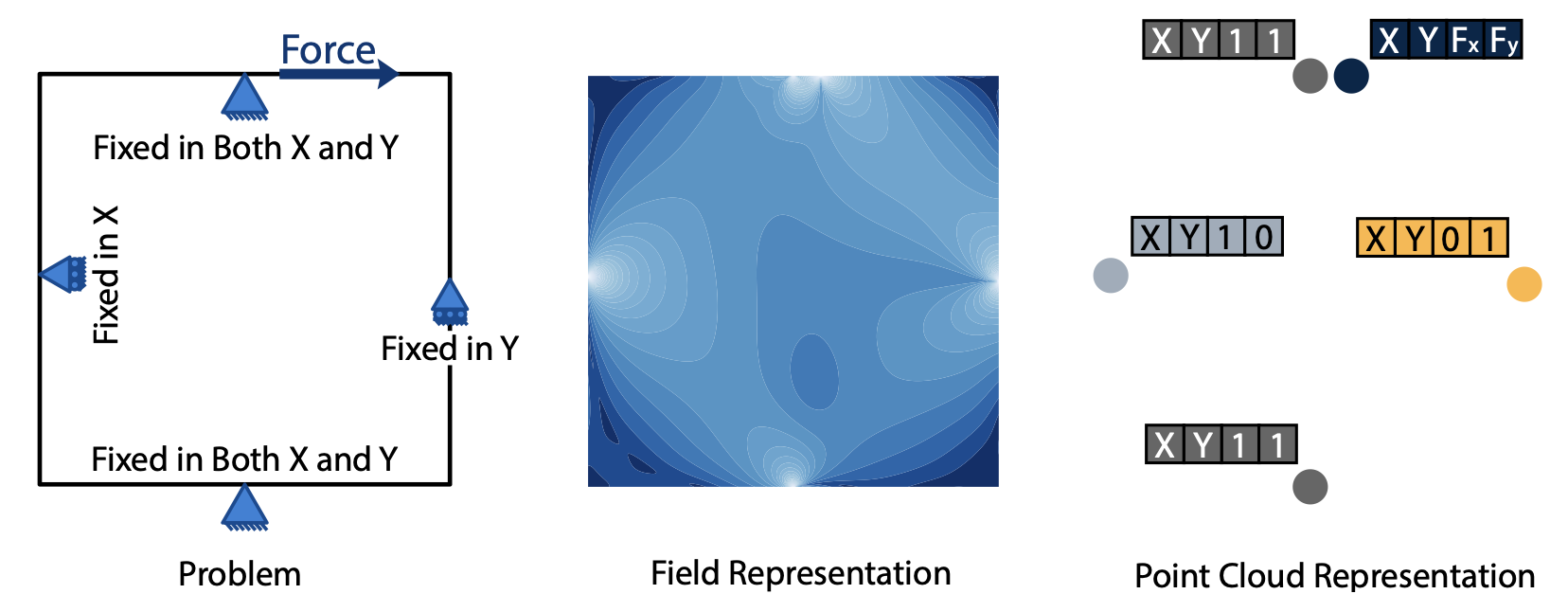 |
Topology optimization is a critical task in engineering design, where the goal is to optimally distribute material in a given space for maximum performance. We introduce Neural Implicit Topology Optimization (NITO), a novel approach to accelerate topology optimization problems using deep learning. NITO stands out as one of the first frameworks to offer a resolution-free and domain-agnostic solution in deep learning-based topology optimization. NITO synthesizes structures with up to seven times better structural efficiency compared to SOTA diffusion models and does so in a tenth of the time. In the NITO framework, we introduce a novel method, the Boundary Point Order-Invariant MLP (BPOM), to represent boundary conditions in a sparse and domain-agnostic manner, moving away from expensive simulation-based approaches. |
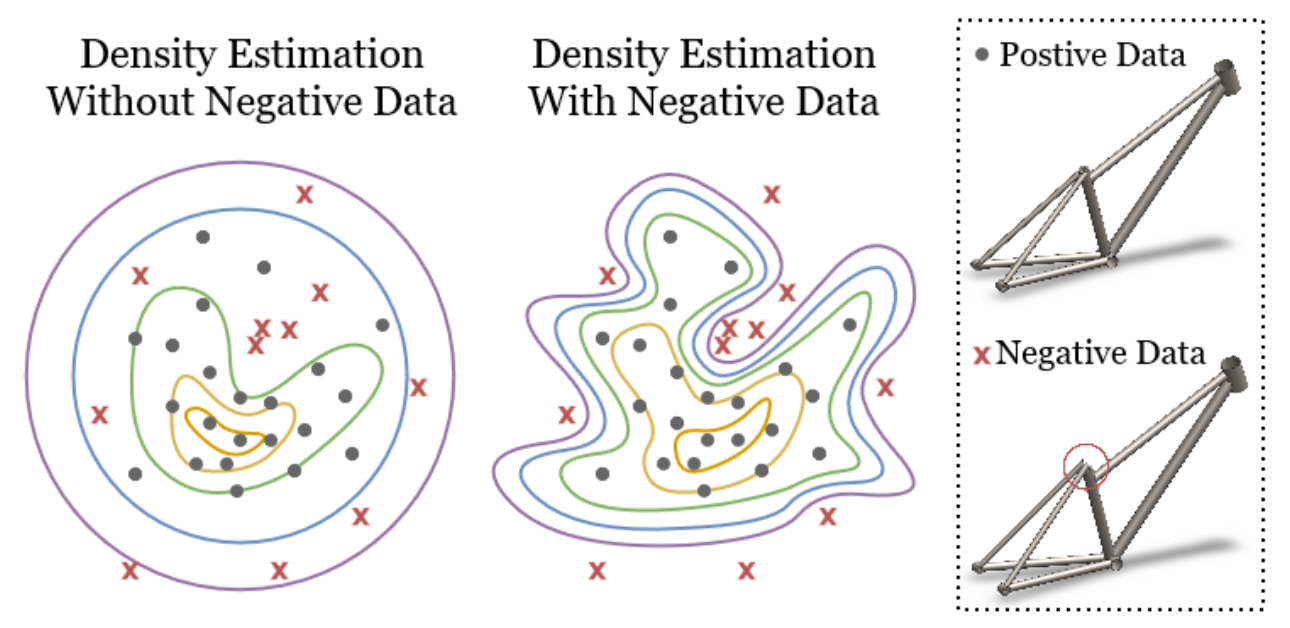 |
Generative models have recently achieved remarkable success and widespread adoption in society, yet they still often struggle to generate realistic and accurate outputs. This challenge extends beyond language and vision into fields like engineering design, where safety-critical engineering standards and non-negotiable physical laws tightly constrain what outputs are considered acceptable. In this work, we introduce two approaches to guide models toward constraint-satisfying outputs using negative data -- examples of what to avoid. |
 |
|
|
|
|
 |
Generative models have had a profound impact on vision and language, paving the way for a new era of multimodal generative applications. While these successes have inspired researchers to explore using generative models in science and engineering to accelerate the design process and reduce the reliance on iterative optimization, challenges remain. Specifically, engineering optimization methods based on physics still outperform generative models when dealing with constrained environments where data is scarce and precision is paramount. To address these challenges, we introduce Diffusion Optimization Models (DOM) and Trajectory Alignment (TA), a learning framework that demonstrates the efficacy of aligning the sampling trajectory of diffusion models with the optimization trajectory derived from traditional physics-based methods. |
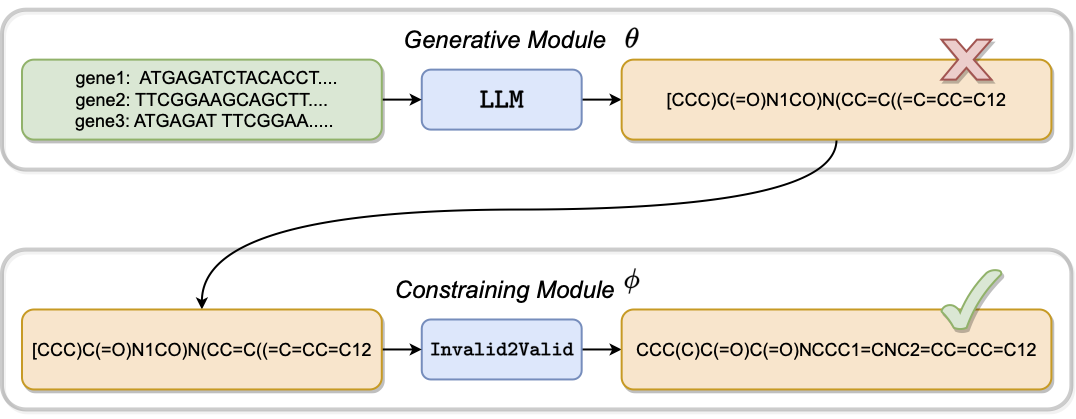 |
|
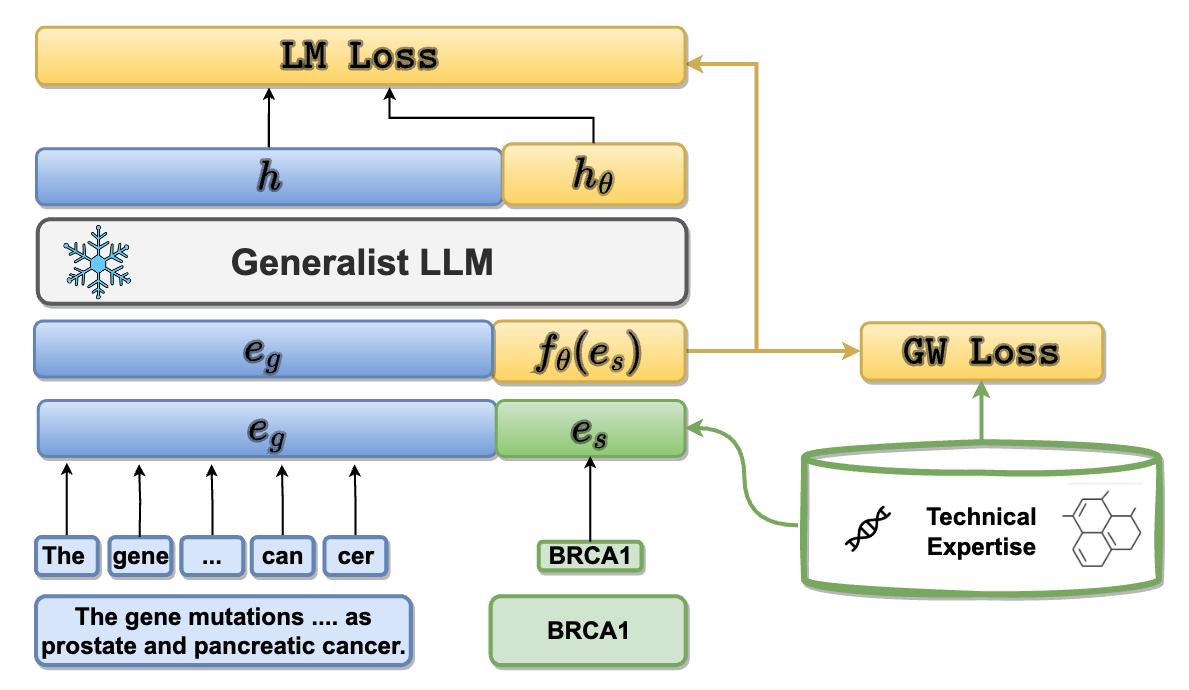 |
|
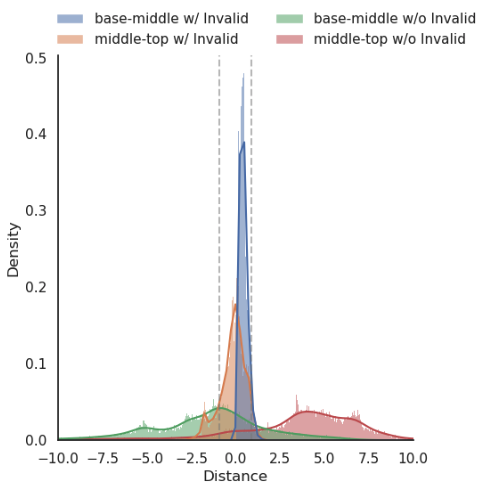 |
Generative models have demonstrated impressive results in vision, language, and speech. However, even with massive datasets, they struggle with precision, generating physically invalid or factually incorrect data. This is particularly problematic when the generated data must satisfy constraints, for example, to meet product specifications in engineering design or to adhere to the laws of physics in a natural scene. To improve precision while preserving diversity and fidelity, we propose a novel training mechanism that leverages datasets of constraint-violating data points, which we consider invalid. |
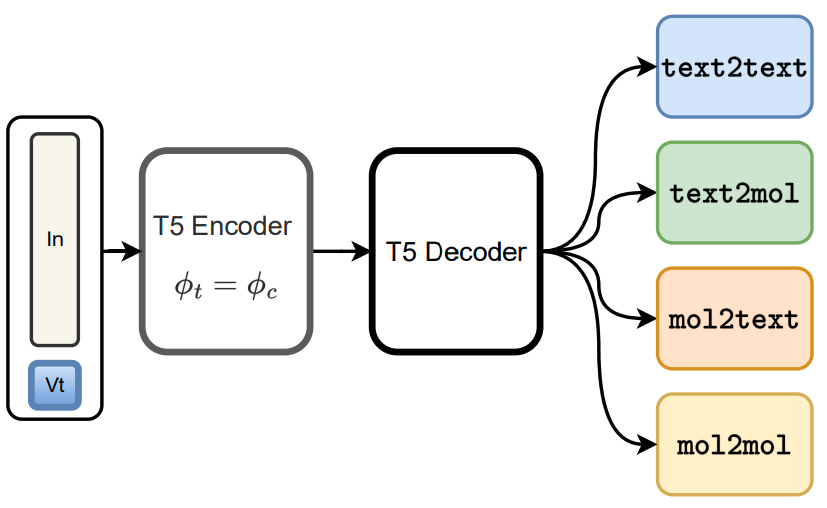
|
The recent advances in neural language models have also been successfully applied to the field of chemistry, offering generative solutions for classical problems in molecular design and synthesis planning. These new methods have the potential to optimize laboratory operations and fuel a new era of data-driven automation in scientific discovery. However, specialized models are still typically required for each task, leading to the need for problem-specific fine-tuning and neglecting task interrelations. Here, we propose a multi-domain, multi-task language model to solve a wide range of tasks in both the chemical and natural language domains. By leveraging multi-task learning, our model can handle chemical and natural language concurrently, without requiring expensive pre-training on single domains or task-specific models. |
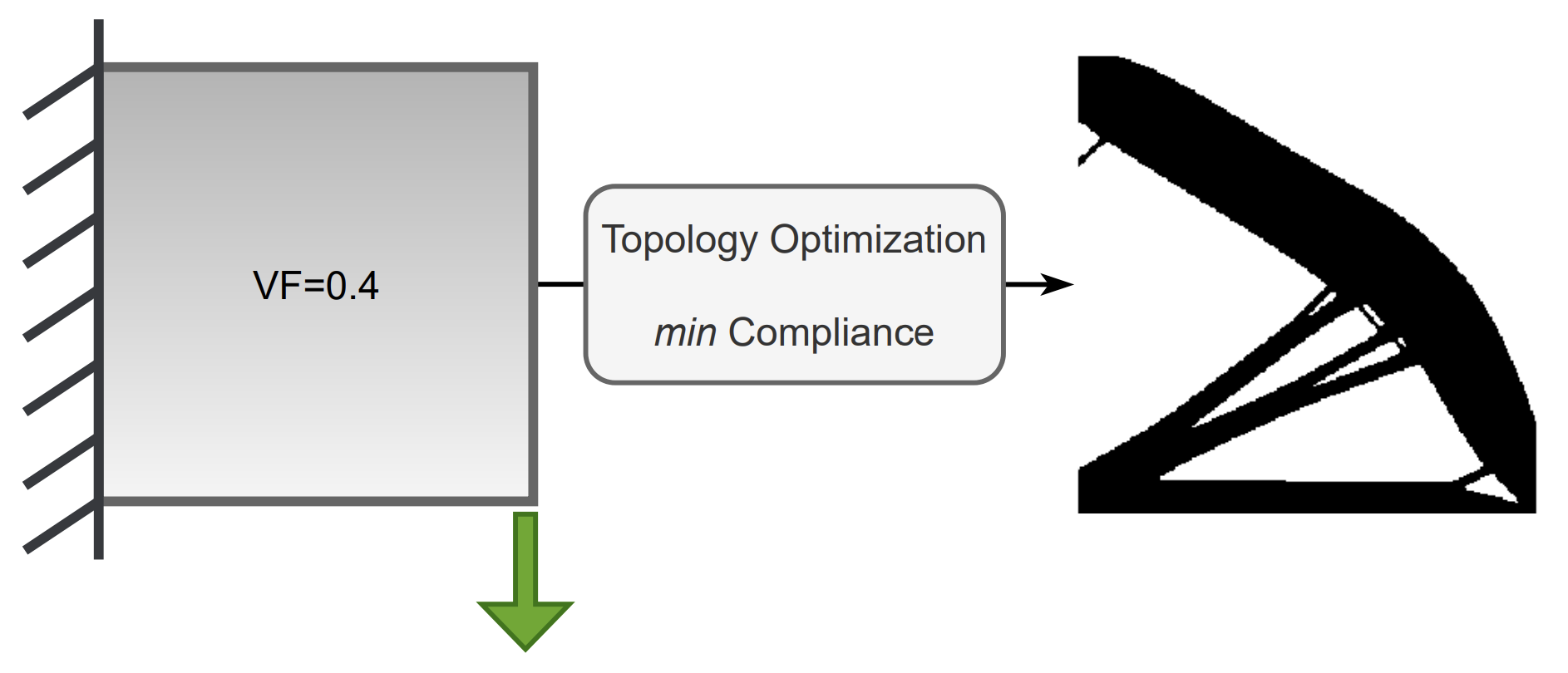 |
Topology Optimization seeks to find the best design that satisfies a set of constraints while maximizing system performance. Traditional iterative optimization methods like SIMP can be computationally expensive and get stuck in local minima, limiting their applicability to complex or large-scale problems. Recently, deep generative models, such as Generative Adversarial Networks and Diffusion Models, conditioned on constraints and physics fields have shown promise, but they require extensive pre-processing and surrogate models for improving performance. To address these issues, we propose a Generative Optimization method that integrates classic optimization like SIMP as a refining mechanism for the topology generated by a deep generative model. |
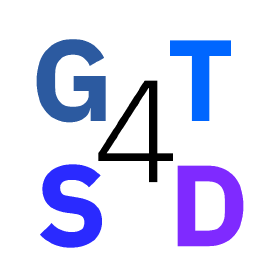
|
|
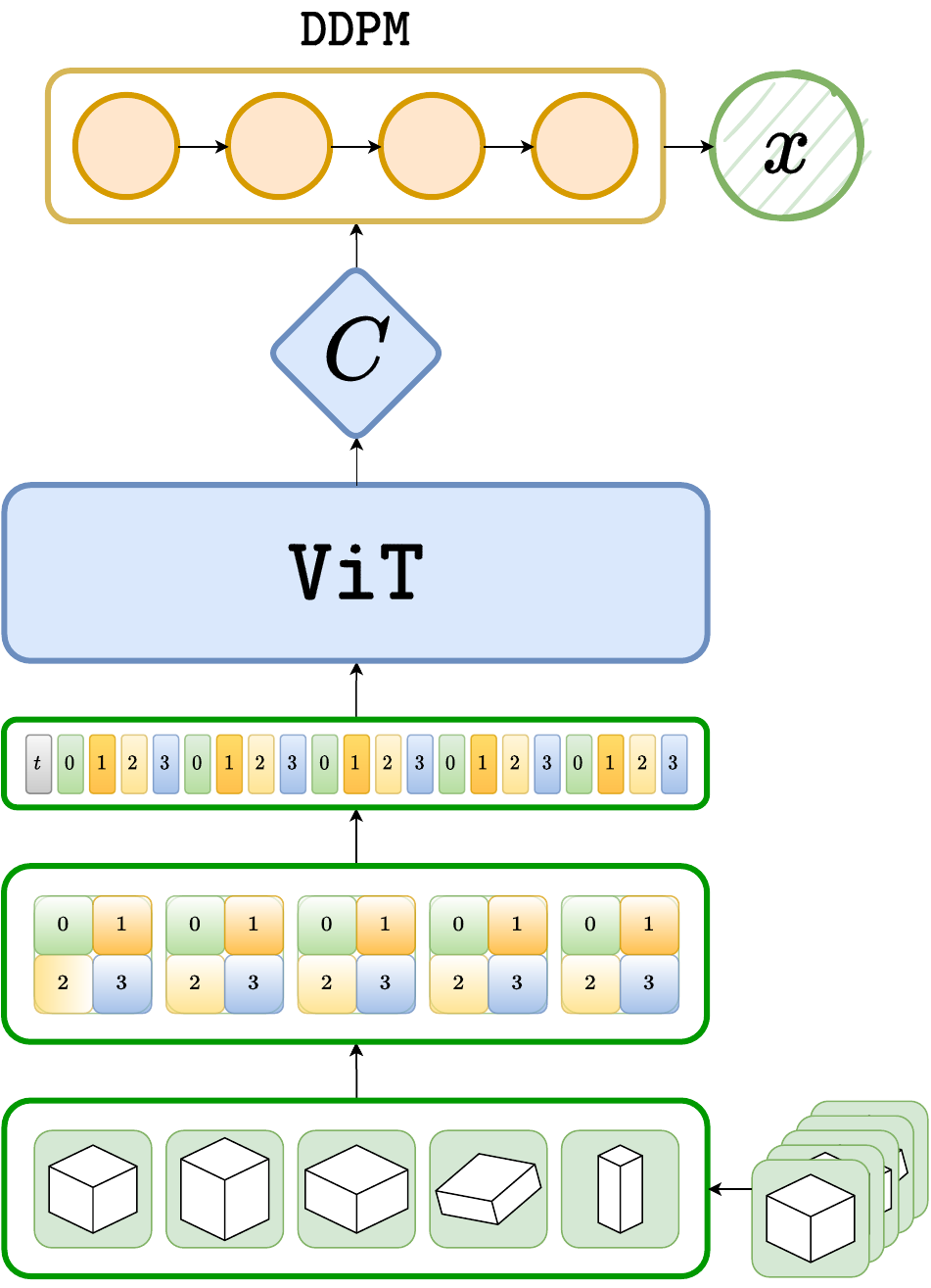 |
Denoising diffusion probabilistic models (DDPM) are powerful hierarchical latent variable models with remarkable sample generation quality and training stability. These properties can be attributed to parameter sharing in the generative hierarchy, as well as a parameter-free diffusion-based inference procedure. In this paper, we present Few-Shot Diffusion Models (FSDM), a framework for few-shot generation leveraging conditional DDPMs. FSDMs are trained to adapt the generative process conditioned on a small set of images from a given class by aggregating image patch information using a set-based Vision Transformer (ViT). At test time, the model is able to generate samples from previously unseen classes conditioned on as few as 5 samples from that class. We empirically show that FSDM can perform few-shot generation and transfer to new datasets taking full advantage of the conditional DDPM. |

|
A few-shot generative model should be able to generate data from a novel distribution by only observing a limited set of examples. In few-shot learning the model is trained on data from many sets from distributions sharing some underlying properties such as sets of characters from different alphabets or objects from different categories. We extend current latent variable models for sets to a fully hierarchical approach with an attention-based point to set-level aggregation and call our method SCHA-VAE for Set-Context-Hierarchical-Aggregation Variational Autoencoder. We explore likelihood-based model comparison, iterative data sampling, and adaptation-free out-of-distribution generalization. |
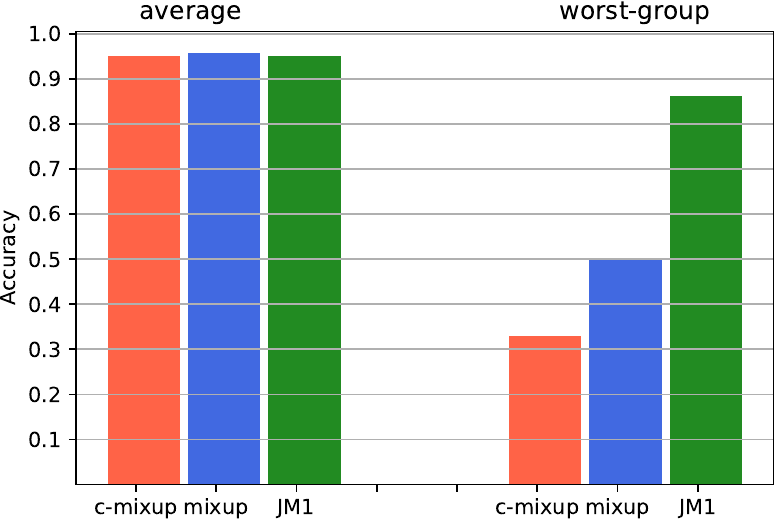
|
Advances in deep learning theory have revealed how average generalization relies on superficial patterns in data. The consequences are brittle models with poor performance with shift in group distribution at test time. When group annotation is available, we can use robust optimization tools to tackle the problem. However, identification and annotation are time-consuming, especially on large datasets. A recent line of work leverages self-supervision and oversampling to improve generalization on minority groups without group annotation. We propose to unify and generalize these approaches using a class-conditional variant of mixup tailored for worst-group generalization. Our approach, Just Mix Once (JM1), interpolates samples during learning, augmenting the training distribution with a continuous mixture of groups. |
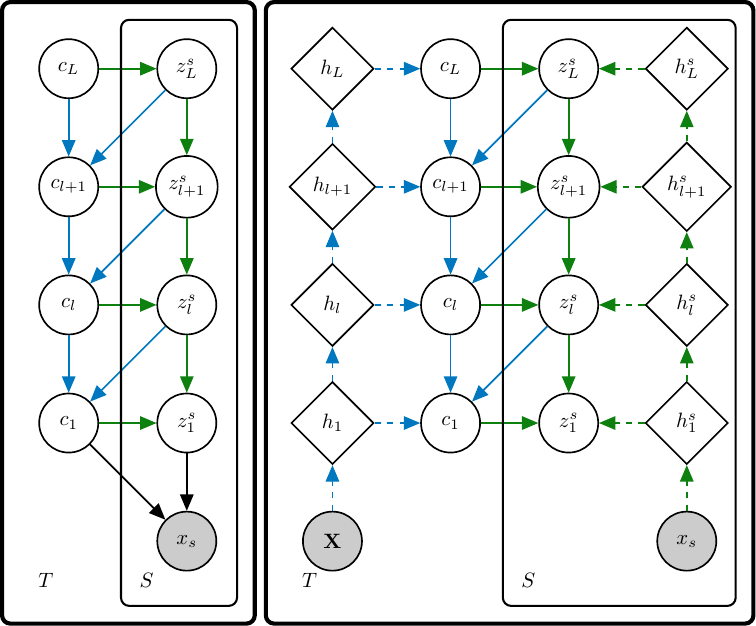 |
A few-shot generative model should be able to generate data from a distribution by only observing a limited set of examples. In few-shot learning the model is trained on data from many sets from different distributions sharing some underlying properties such as sets of characters from different alphabets or sets of images of different type objects. We study a latent variables approach that extends the Neural Statistician to a fully hierarchical approach with an attention-based point to set-level aggregation. We extend the previous work to iterative data sampling, likelihood-based model comparison, and adaptation-free out of distribution generalization. |
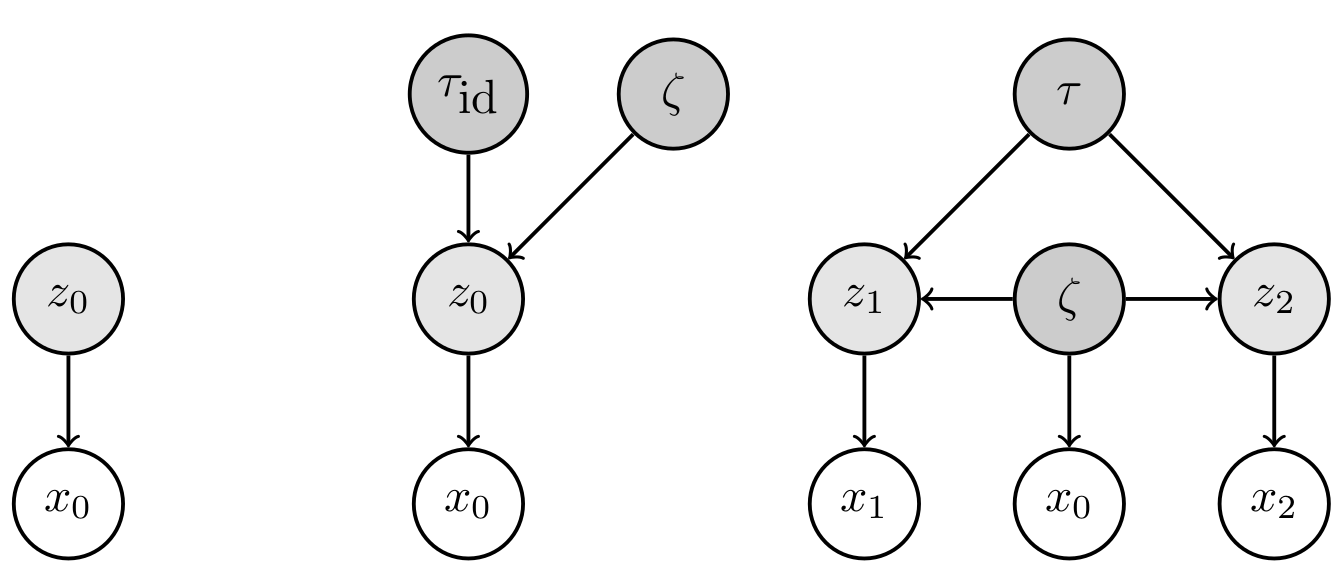 |
We extend the framework of variational autoencoders to represent transformations explicitly in the latent space. This is achieved in the form of a generative model structured such that the group of transformations that act in the input space is instead represented by latent variables which are linear operators that only act in the latent space. In the family of hierarchical graphical models that emerges, the latent space is populated by higher order objects which are inferred jointly with the latent representations they act on. |

|
Event-based cameras are novel, efficient sensors inspired by the human vision system, generating an asynchronous, pixel-wise stream of data. Learning from such data is generally performed through heavy preprocessing and event integration into images. This requires buffering of possibly long sequences and can limit the response time of the inference system. In this work, we instead propose to directly use events from a DVS camera, a stream of intensity changes and their spatial coordinates. This sequence is used as the input for a novel asynchronous RNN-like architecture, the Input-filtering Neural ODEs. |
 |
We propose to extend Latent Variable Models with a simple idea: learn to encode not only samples but also transformations of such samples. This means that the latent space is not only populated by embeddings but also by higher order objects that map between these embeddings. We show how a hierarchical graphical model can be utilized to enforce desirable algebraic properties of such latent mappings. |
 |
We propose a new deep learning architecture for the tasks of semantic segmentation and depth prediction from RGB-D images. We revise the state of art based on the RGB and depth feature fusion, where both modalities are assumed to be available at train and test time. We propose a new architecture where the feature fusion is replaced with a common deep representation. Combined with an encoder-decoder type of the network, the architecture can jointly learn models for semantic segmentation and depth estimation based on their common representation. |
|
|
|
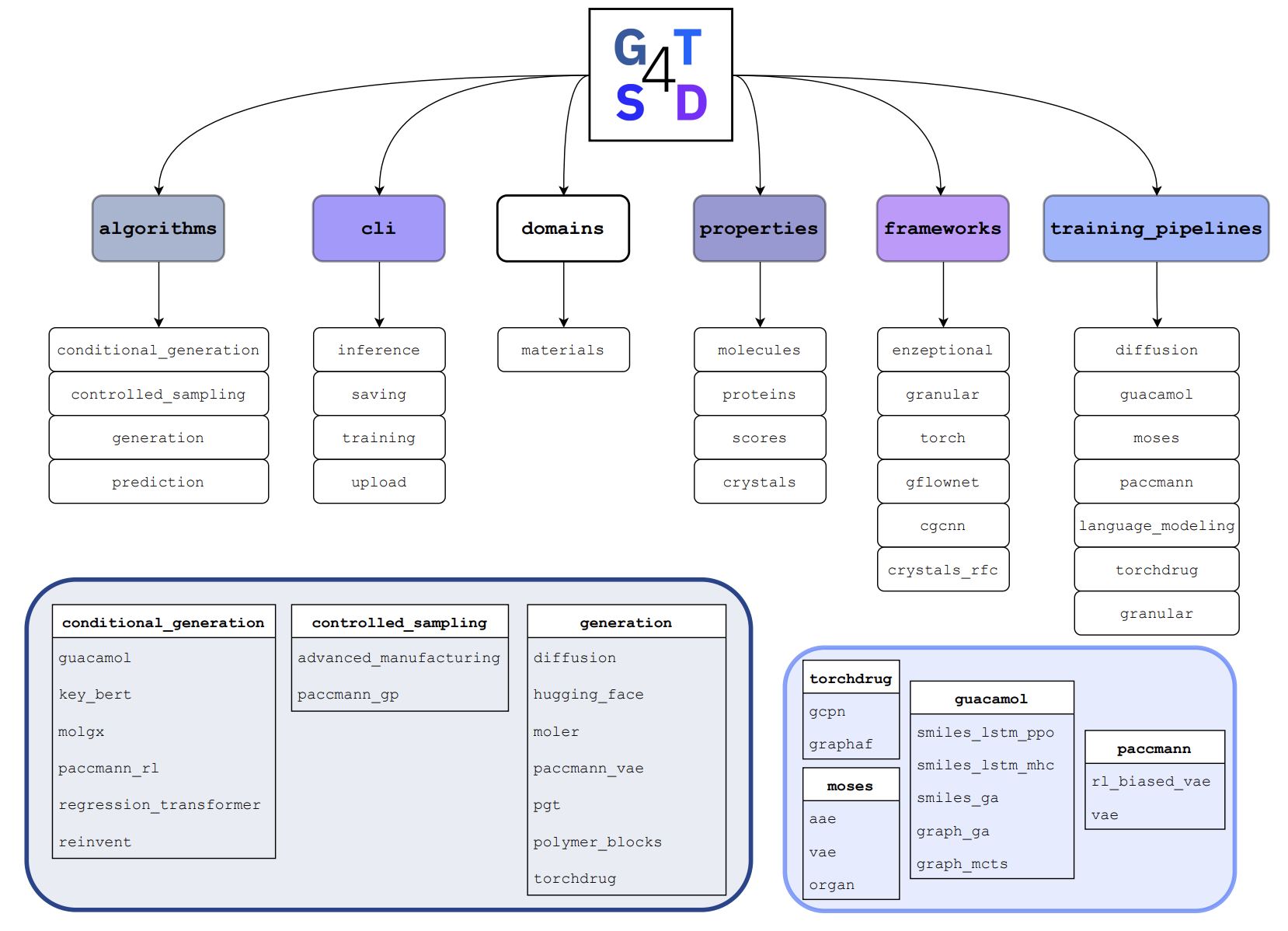 |
The GT4SD (Generative Toolkit for Scientific Discovery) is an open-source platform to accelerate hypothesis generation in the scientific discovery process. It provides a library for making state-of-the-art generative AI models easier to use. |
|
|
|
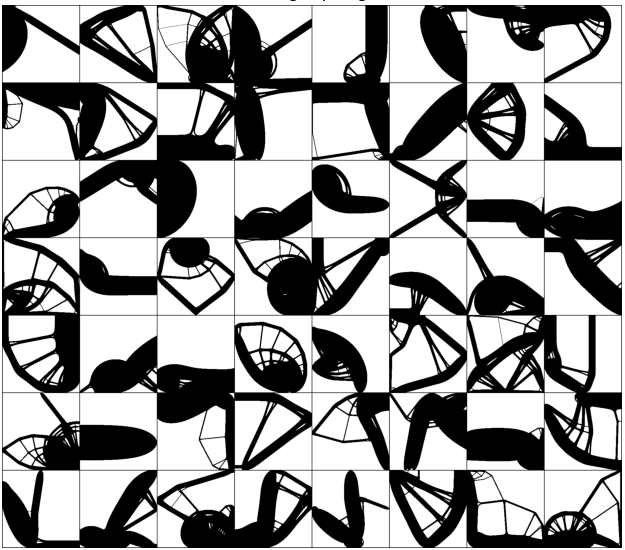 |
We built a dataset of optimized topologies and intermediate optimization steps at low-resolution (64x64) and high-resolution (256x256) with constraints.
|
 |
We built a multifidelity dataset of 300K optimized topologies with constraints.
|
|
|
|
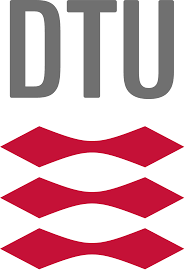 |
•
•
•
•
|
|
|
|
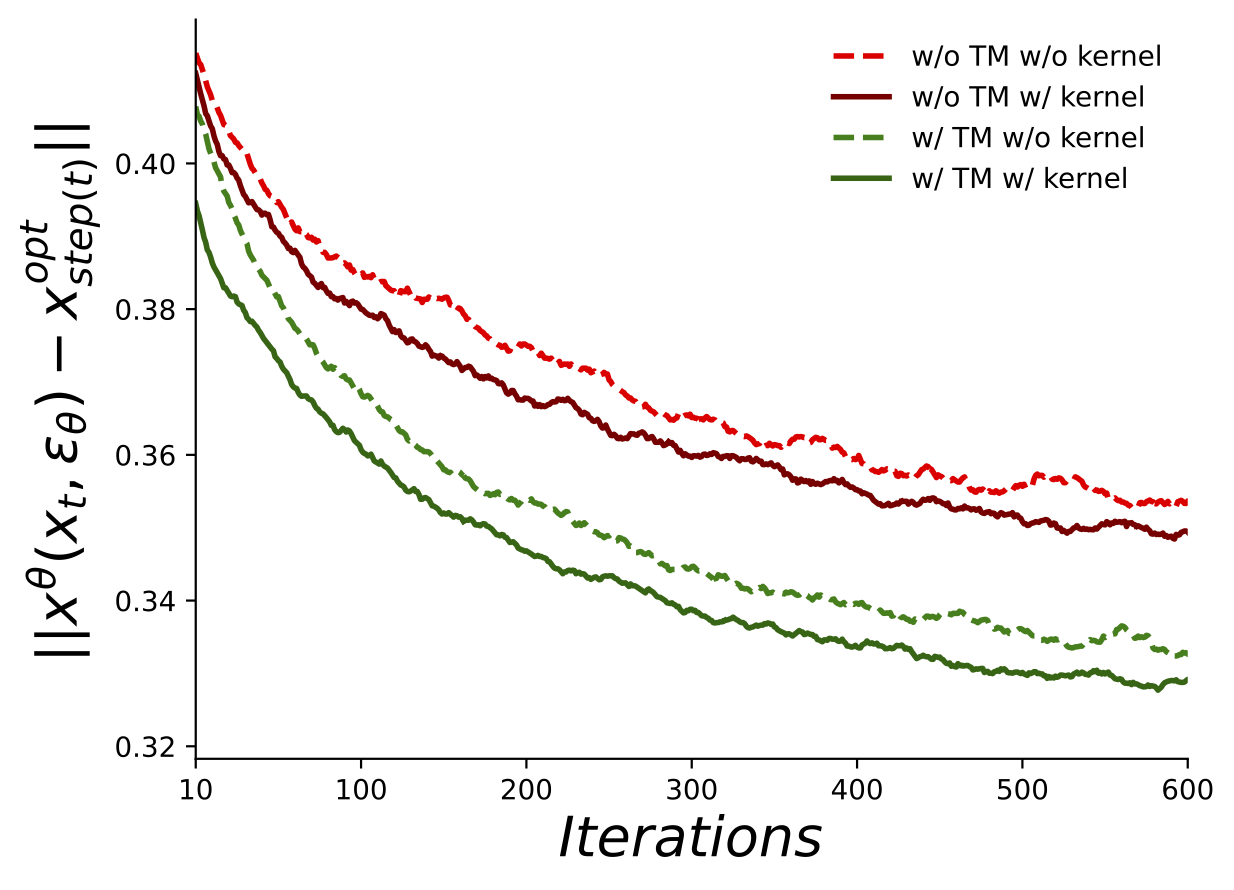 |
|
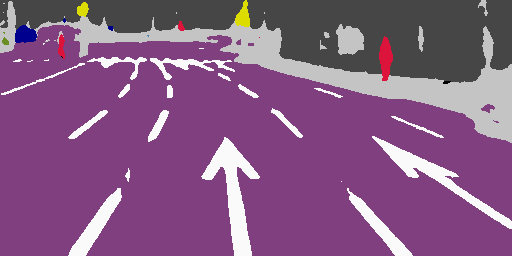 |
|
|
|
|
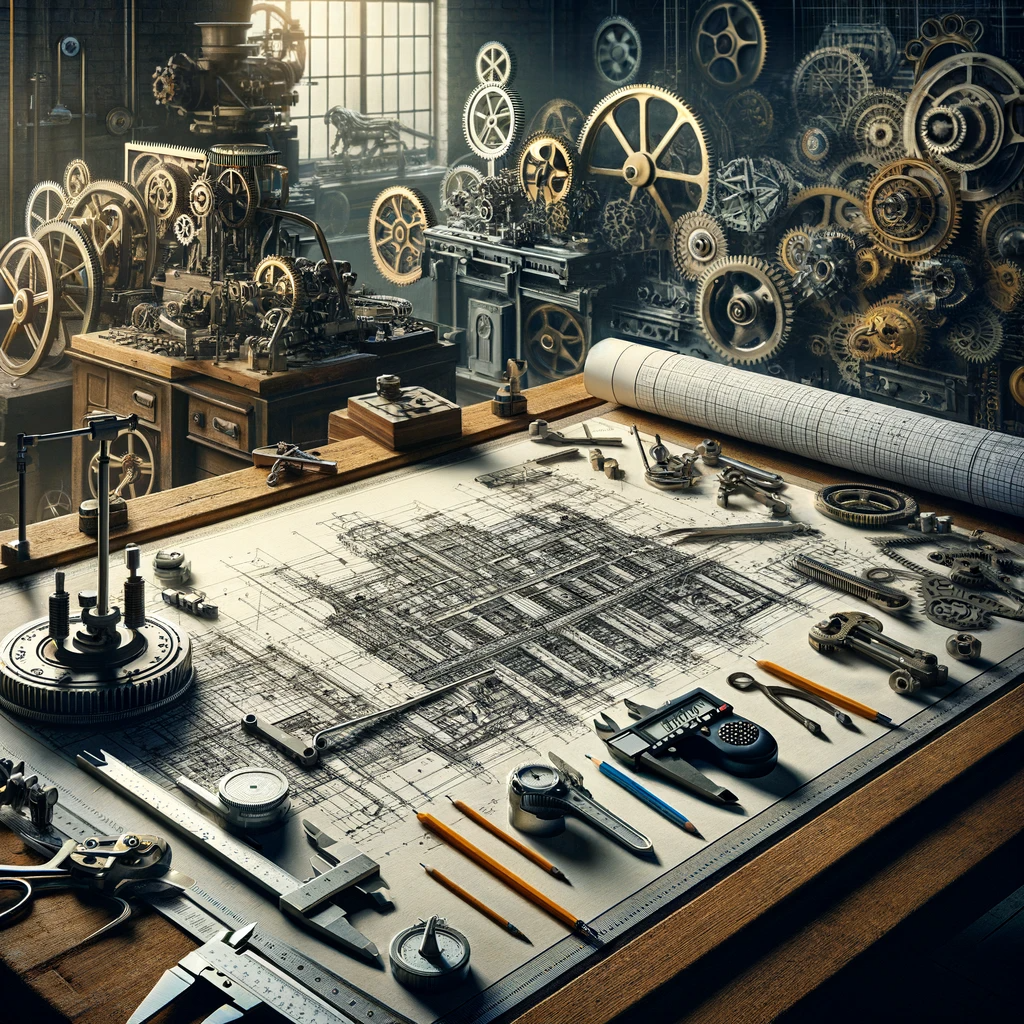 |
|
 |
|

|
|


